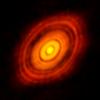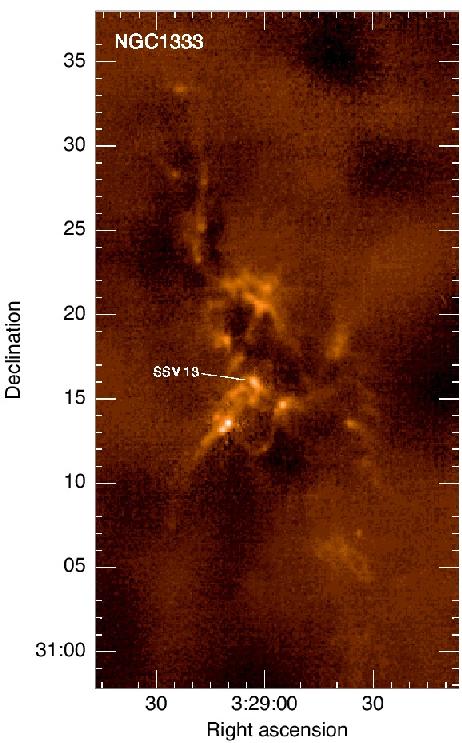An understanding of the process of star formation is an essential requirement of theories of galaxy formation and evolution, and gives direct insights into the formation of our own Sun and the number of extra-solar planets we expect to find in the Galaxy. We use telescopes operating at millimetre and sub-mm wavelengths to observe the cool molecular clouds which are collapsing to form stars and help understand the basic physics of star formation. In particular, we study the supersonic jets ejected during the star formation process, and the accretion disks surrounding the protostars which allow the stars to grow in mass and in which planets are believed to form.
 One of the most important features of ALMA is that it can make high-quality images with very good angular resolution. This picture shows the disc of gas and dust surrounding a young star. The whole image is less than two arcseconds across and the resolution is about 0.03 arcseconds.
One of the most important features of ALMA is that it can make high-quality images with very good angular resolution. This picture shows the disc of gas and dust surrounding a young star. The whole image is less than two arcseconds across and the resolution is about 0.03 arcseconds.
This high resolution makes it possible to see that the disc is made up of a series of bright rings with gaps in between them - careful examination shows at least 7 separate rings. It is very likely that this pattern is a result of the fact that planets are starting to form out of the disc. Although the planets themselves are too small to be seen, we should be able to learn more about their properties and the process of planet formation through detailed analysis of this image and similar ones of other young stars that should be obtained by ALMA in the coming years.
We are active users of HARP and SCUBA-2 on the James Clerk Maxwell Telescope in Hawaii, which allow us to map the nearby molecular cloud population with unprecedented detail and sensitivity, as shown in the image of NGC1333. We are involved in the JCMT legacy surveys of Gould Belt and the Galactic Plane. Members of the group are also investigating the nature of star formation on galactic scales — see the pages of the Galaxy Evolution group.

If you are interested in doing research in these areas, please visit our Graduate Research Opportunities web pages.

